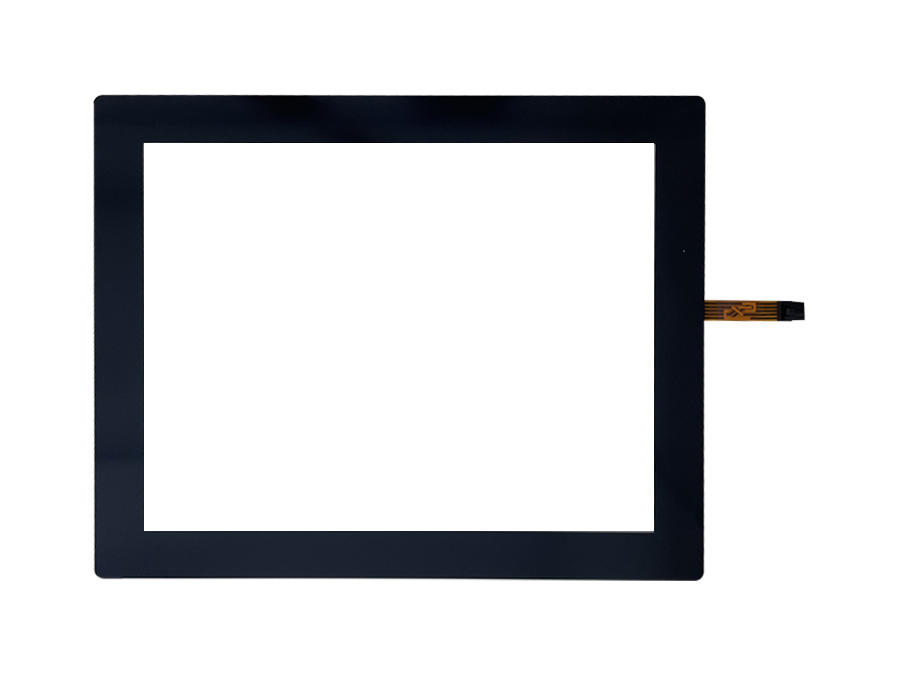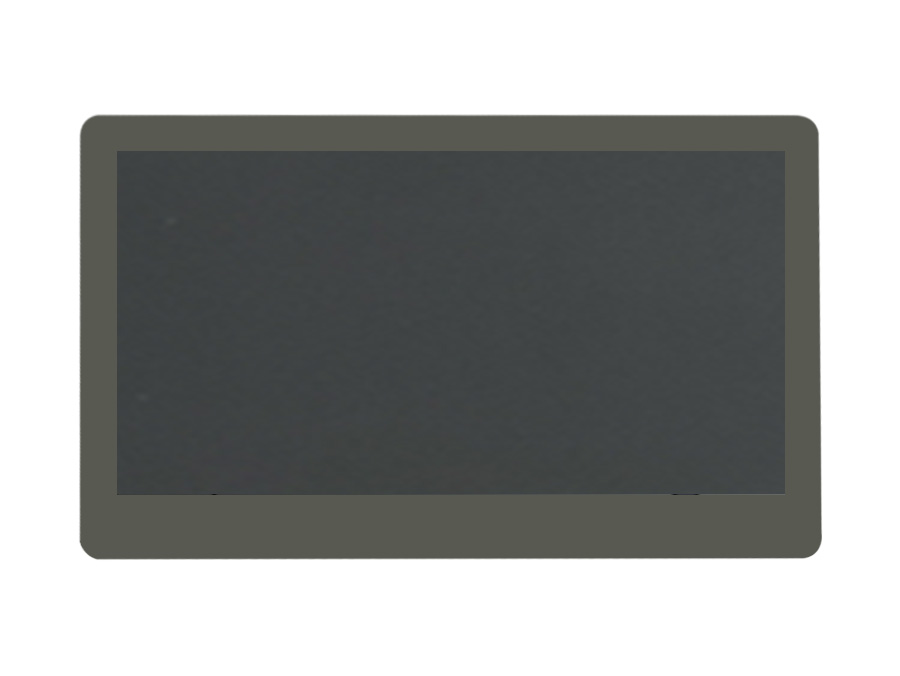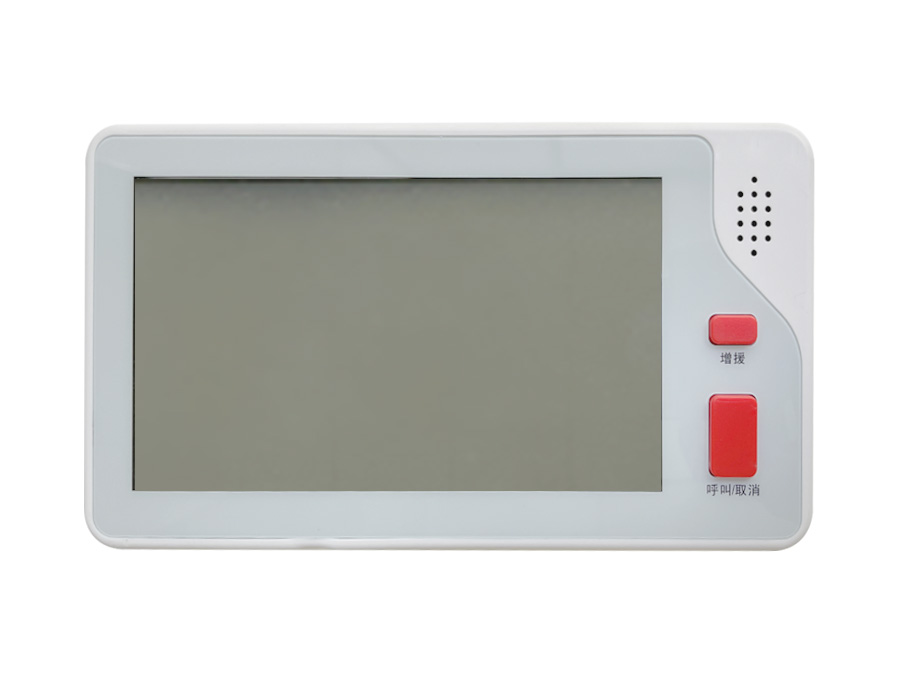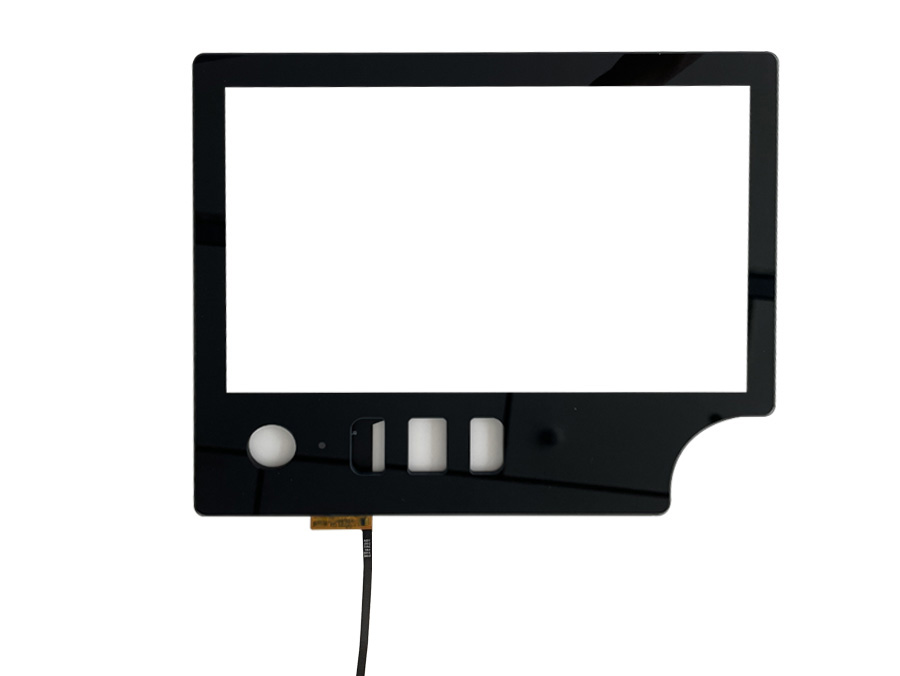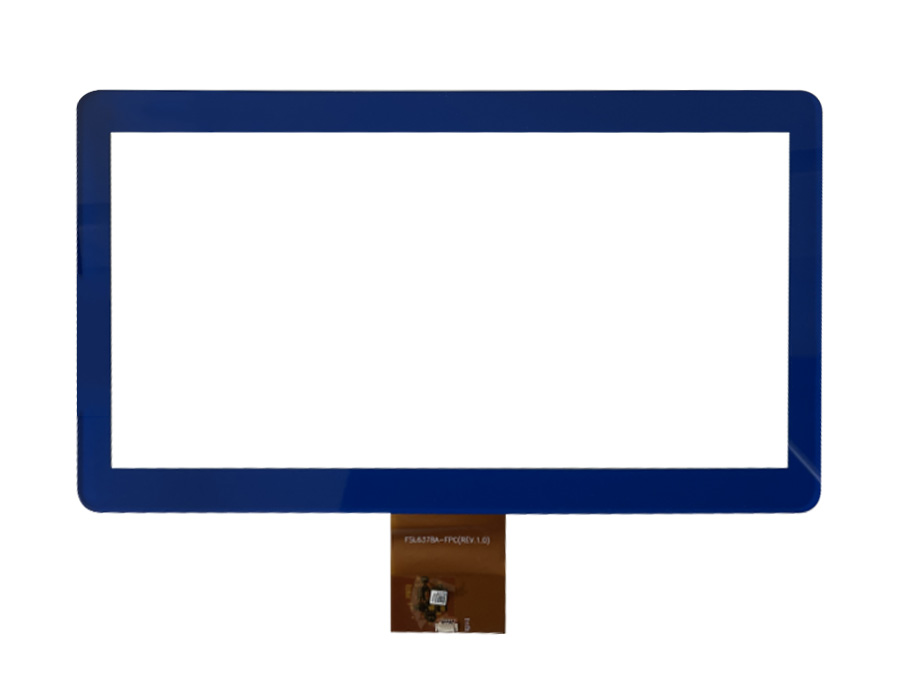The two transparent metal layers of the four-wire resistance analog technology operate with a constant voltage of 5V in each layer: one vertical and one horizontal. A total of four cables are required. High resolution, high speed transmission response. Surface hardness treatment, reduce scrapes, scratches and chemical treatment. With smooth surface and fog surface treatment. One correction, high stability, never drift.
The base layer of the five-wire resistance technology touch screen adds the voltage field in two directions to the conductive working surface of the glass through the precision resistance network, we can simply understand that the voltage field in two directions is added to the same working surface, and the outer nickel gold conductive layer is only used as a pure conductor. The position of the touch point is measured by measuring the voltage values of X and Y axis of the inner ITO contact point. The inner ITO of the five-wire resistance touch screen needs four leads, the outer ITO is only one conductor, and the touch screen has a total of five leads. High resolution, high-speed transmission reaction. High surface hardness, reduce scrapes, scratches and chemical treatment. The same point contact 30 million times can still be used. Conductive glass is the medium of the substrate. One correction, high stability, never drift. The five-wire resistive touch screen has the disadvantages of high price and high environmental requirements. The outer conductive layer of the five-wire resistance touch screen uses a malleable nickel-gold coating material. Due to frequent touch of the outer conductive layer, the purpose of using a malleable nickel-gold material is to extend the service life, but the process cost is relatively high. Although the nickel gold conductive layer is good in ductility, it can only be used as a transparent conductor, and is not suitable for use as the working surface of the resistance touch screen, because it has high conductivity, and the metal is not easy to achieve a very uniform thickness, it is not suitable for voltage distribution layer, and can only be used as a probe layer.
Whether it is a four-wire resistive touch screen or a five-wire resistive touch screen, they are a completely isolated working environment for the outside world, not afraid of dust and water vapor, it can be touched with any object, can be used to write and draw, more suitable for industrial control fields and limited people in the office. The common disadvantage of the resistive touch screen is that the outer layer of the composite film is made of plastic material, and people who do not know that too much force or touch with a sharp instrument may scratch the entire touch screen and lead to scrap. However, within the limit, the scratch will only hurt the outer conductive layer, and the scratch of the outer conductive layer is not relevant for the five-wire resistance touch screen, and it is fatal for the four-wire resistance touch screen. The precision of the resistance touch screen only depends on the accuracy of the A/D conversion, so it can easily reach 4096*4096· Comparatively speaking, the five-wire resistance is superior to the four-wire resistance in ensuring the resolution accuracy, but the cost is large, so the price is relatively high.


